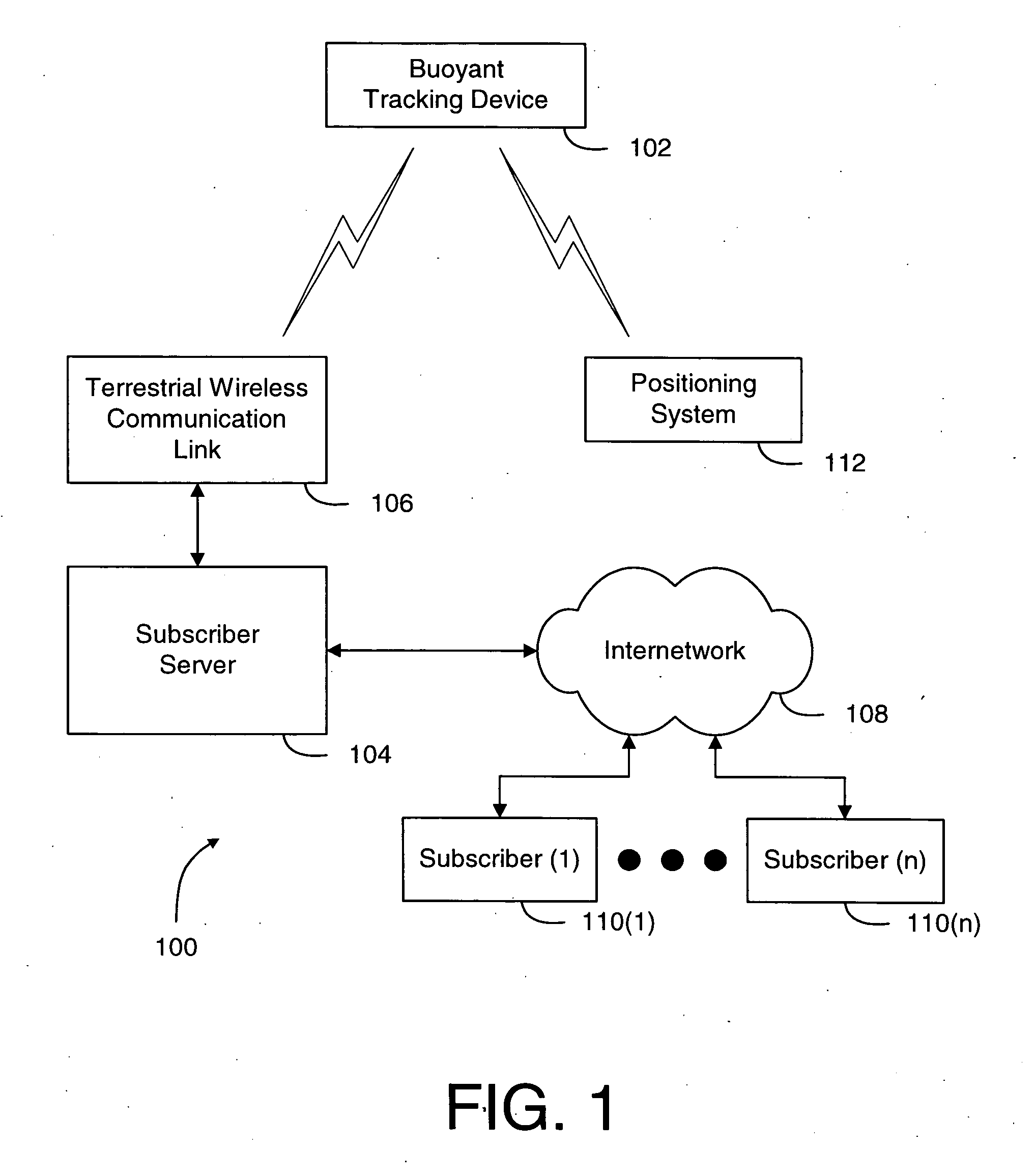Buoyant tracking device and method of manufacture
a tracking device and buoy technology, applied in the direction of electric signalling details, navigational aids with satellite radio beacon positioning, instruments, etc., can solve the problems of user's inability to activate the device, user's deactivation or simply not activating, and the user's mechanical activation is required, so as to achieve the effect of minimizing the size and weight of the device and effectively using i
- Summary
- Abstract
- Description
- Claims
- Application Information
AI Technical Summary
Benefits of technology
Problems solved by technology
Method used
Image
Examples
Embodiment Construction
[0038]The present invention overcomes problems associated with the prior art, by providing a tracking device coupled to a buoyant component. The tracking device includes a wireless communication device configured to communicate via a terrestrial based network (e.g., a cell phone network). The tracking device can be conveniently attached to wearable PFDs and other buoyant components, because of the device's relatively small size as compared to a satellite telephone. In the following description, numerous specific details are set forth (e.g., particular electronic components, particular buoyant components, etc.) in order to provide a thorough understanding of the invention. Those skilled in the art will recognize, however, that the invention may be practiced apart from these specific details. In other instances, details of well known PFD manufacturing and electronics assembly practices and components have been omitted, so as not to unnecessarily obscure the present invention.
[0039]FIG...
PUM
 Login to View More
Login to View More Abstract
Description
Claims
Application Information
 Login to View More
Login to View More - R&D
- Intellectual Property
- Life Sciences
- Materials
- Tech Scout
- Unparalleled Data Quality
- Higher Quality Content
- 60% Fewer Hallucinations
Browse by: Latest US Patents, China's latest patents, Technical Efficacy Thesaurus, Application Domain, Technology Topic, Popular Technical Reports.
© 2025 PatSnap. All rights reserved.Legal|Privacy policy|Modern Slavery Act Transparency Statement|Sitemap|About US| Contact US: help@patsnap.com



